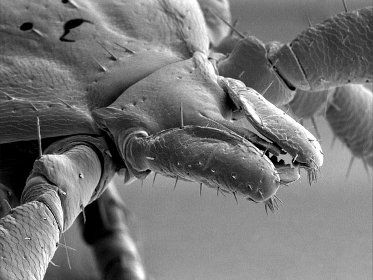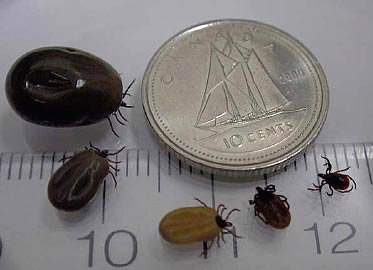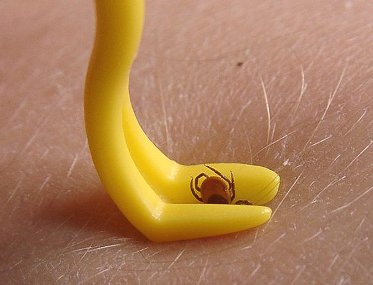Great dane health : ticks
Description
Ticks are external parasites of vertebrates. Ticks are acarina and for acarina, they are large (3 to 6 mm on average).
They are several hundred species and subspecies. The shape, size and color of the ticks vary greatly depending on species and stage of development. The body is always oval.
Ticks feed on blood of animals they parasitize.
The mild and wet periods of spring and autumn are favorable for the development of this acarina.

Closeup of the head of a tick made by a scanning electron microscope
© Thierry Thomasset - Université de Technologie de Compiègne

Various stages of engorgement of black legs female ticks
(Note the changes in size and color)
© Public Health Agency of Canada
Location
Ticks are very common in the world and have a variety of habitats by species. They are found mainly in grassy areas and woodland. Some species are adapted to dry climates, and even desert.
The population depends on vegetation, temperature and humidity.
Ticks and diseases
Ticks can carry many serious diseases including :
- Piroplasmosis or Babesiosis caused by a protozoan, Babesia Canis
- Borreliosis caused by a bacterium, Borrelia Burgdorferi (Lyme disease)
- Ehrlichiosis caused by a bacterium, Ehrlichia Ruminantium
In case of bite
The risk of infection increases with duration of contact, remove the tick as quickly as possible.
Be careful ! : do not pull on the tick to remove it.
In fact, to feed with blood the tick bites animal with its rostrum. This rostrum is entirely covered with spines which are retrogradely implanted. If you pull the tick, these spines straighten and hold the rostrum which breaks at its base. The head remains in the flesh and can cause an infection.
You must use a special hook and rotate slowly a little bite the body of the parasite. The spines back around the axis of rotation and the tick can be detached and removed safely. Do not forget to disinfect the area of the bite.

Special hook used to remove safely a tick
© Otom
Prevention
The best way to prevent disease is to prevent the tick from biting the animal.
You have to choose an effective antiparasite. It's possible to find them on collars or in sprays for exemples. The antiparasite must be used even on vaccinated animals.
Top of the page

